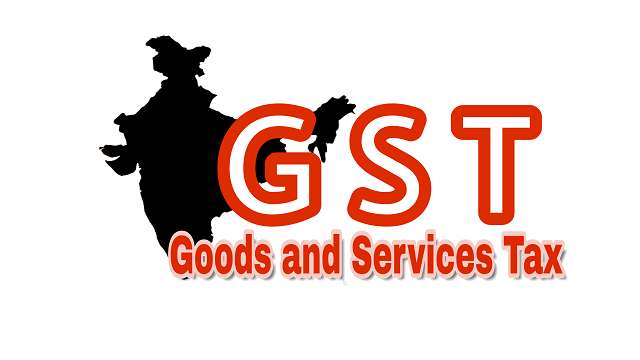A budget is an estimate of expenditure and income of a business. The difference between the two represents the profit or loss which the company estimates. Earning of profits is an aim for every business. However, there is another important aspect which the businesses need to consider which is cash flow. A positive cash flow ensures business continuity, reduces financing cost and helps a business to fulfil its obligations towards various stakeholders in a timely manner. A business needs to ensure that its receivables (i.e., amount to be recovered from customers) and payables (i.e., amount to be paid to suppliers) are in harmony. Imagine a business which sells on a 60 days credit and buys on a 30 days credit. Such a business will end up spending a major portion of its profits towards financing cost for paying off its suppliers.

GST is a tax which is charged on each step of the supply chain and therefore, it plays a pivotal role in budgeting of any business. The following are some of the points which the businesses can implement to ensure that GST does not adversely impact their budget.
(1) Applying the correct rate of tax
The GST law provides for various rates viz., 0%, 5%, 12%, 18% and 28%, to be paid on goods or services. In today’s competitive world, it is often the market dynamics which determine the price of product which is typically inclusive of taxes. In such a case, if a higher rate of tax is charged the same adversely hits the profits of business. Say, a business pays GST at 18% instead of 5%, it will reduce the businesses profit by a straight 13%. On the contrary, a lower rate may trigger a dispute with department. Thus, determining the correct rate of GST is very crucial.
(2) Export of goods and services without payment of GST
Under GST, businesses are provided with option to export without payment of tax or with payment of tax. A business is not allowed to recover the amount of tax from the customer because the Government refunds the amount of tax. However, in such a case the business needs to pay the amount of tax from its own pocket to the Government and then claim refund of the amount. This increase the cash requirement of the business as the amount of tax is stuck with the Government, till the time refund is granted. Businesses should opt for export without payment of tax by furnishing a LUT / bond.
(3) Timeline for issuing of invoices to customers
GST is payable on a monthly basis i.e., GST on the amount of sales made during a month needs to be paid by 20th day of the following month. To the extent feasible, the businesses should try to raise its invoices (specially in case of periodic or contractual payments) by the 10th of the month. This will ensure that the customer has ample to time to process the invoice and release the funds to the businesses. It must be mentioned that businesses need to pay GST irrespective of whether the amount is not yet recovered from the customer. In case the invoices are raised in the later part of the month, the business may have to pay GST from its own pocket till the time the invoices are not disbursed by the customer.
(4) Payment of taxes
GST is collected by a business on behalf of the Government. A business is required to pay GST in cash (balance after adjustment from input tax credit) by the date prescribed. In case of delay, the Government collects heavy interest at 18%. A business should evaluate its cost of borrowing funds and compare it with the interest to be paid to the Government. Generally, the cost of borrowing funds is lower and in case of shortage of funds to pay GST, it will be prudent for the business to borrow funds as an interim measure for payment.
(5) Evaluate input tax credit
The Government allows businesses to claim input tax credit of GST paid on purchases made by it. A business should ensure that proper tax invoices are obtained by it from suppliers with the correct particulars to ensure that no input tax credit is missed out. The practice should also be implemented for employee reimbursements. This will ensure that the businesses are entitled to claim a set-off of taxes paid on purchases which consequentially, decreases the cost of purchases.
(6) Timely filing of refund claims
The GST law provides for filing of refund in case of export on payment of taxes. It also allows refund of input tax credit under certain circumstances including inverted duty structure (i.e., GST paid on purchase is more than GST paid on sales). Businesses should ensure that they file refund claims in a timely manner and after a complete evaluation of their entitlement. Delay or incomplete filing of refund increases the fund requirement of a business and in certain cases may also lead to rejection of the claims.
Proper implementation of the above points will ensure that GST does not adversely impact your budget. GST is a very business friendly regime. However, to extract full advantage of this newly implemented regime it is important that the procedures of the GST Law are correctly followed.

About CA Anuj Kakkar: CA Anuj Kakkar is the Founder of Vriddhi Advisors. He has more than eight years of specialised experience in indirect taxes including Service Tax, GST, VAT, customs and specializes in supply chain tax optimisation, tax litigation and foreign trade policy. He was actively involved in assisting various companies in planning, implementation and post-implementation support for GST.
He has been a speaker in various technical sessions organised by ICAI, trade forums like PhD Chambers, and management schools like FMS, Amity University, Apeejay School of Management and is an active contributor of articles of professional significance in various journals. He is recognized as GST faculty by ICAI.






